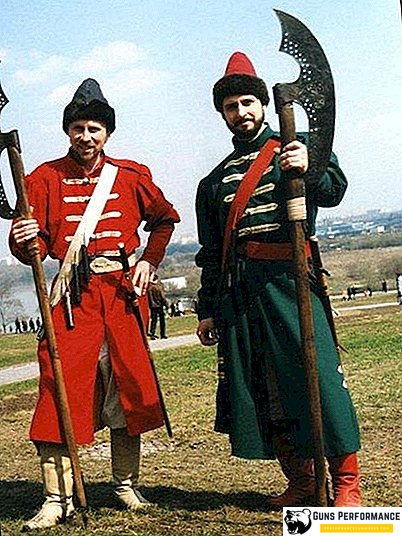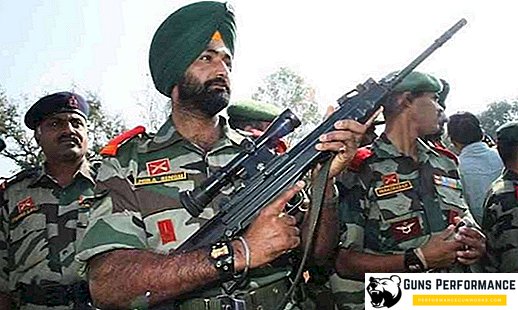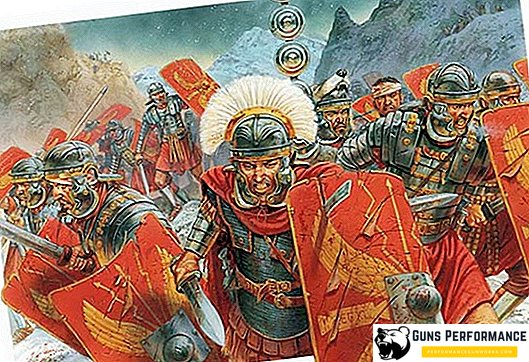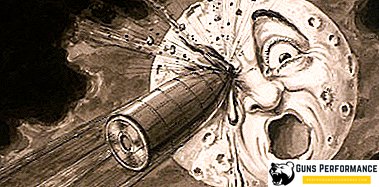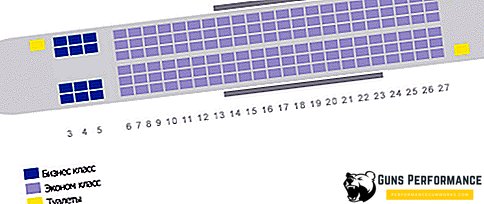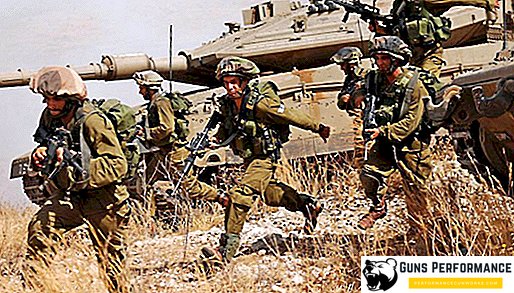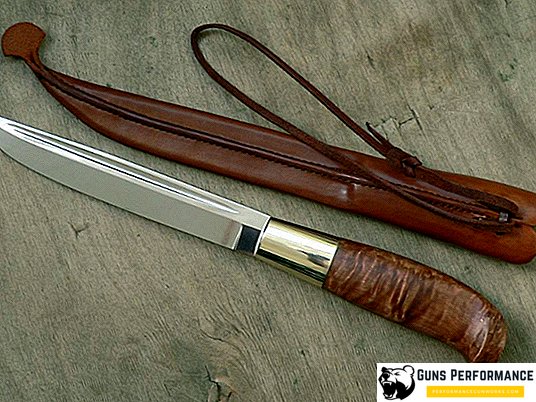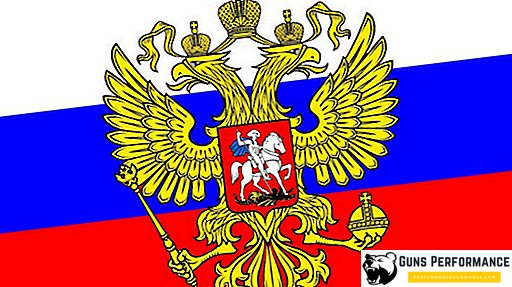
The national emblem of Russia is one of the main symbols of our country, along with the national anthem and the flag of the Russian Federation. It was approved in 1993 by decree of the first president of the country, Boris Yeltsin. However, the symbols that are depicted on the coat of arms of Russia have a much longer history, dating back to the period of the formation of the Moscow principality. The coat of arms of the Russian Federation depicts a double-headed eagle spreading its wings. What does it symbolize on the coat of arms of Russia?
Any national emblem is not only an image on bank notes, documents and police chevrons. First of all, the coat of arms is a national symbol intended to unite people living in a given territory.
What does the national emblem of the Russian Federation mean? When did he appear? Was the coat of arms of medieval Russia look like a modern one? Why does the Russian eagle have two heads?
The history of the coat of arms of Russia is rich and interesting, but before you talk about it, you should give a description of this national symbol.
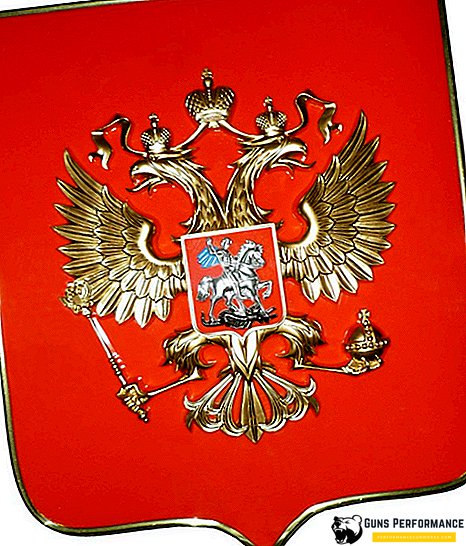
Description of the coat of arms of the Russian Federation
The coat of arms of the Russian Federation is a heraldic red shield depicting a golden two-headed eagle spread its wings.
Each head of the eagle is crowned with a crown, in addition, above them is another, larger crown. Three crowns are connected by a gold ribbon. In the right paw, the double-headed eagle holds a scepter, and in the left - the orb. On the chest of the double-headed eagle there is another red shield depicting a rider hitting a dragon with a silver spear.
As it should be according to the heraldic laws, each of the elements of the Russian coat of arms has its own meaning. The double-headed eagle is a symbol of the Byzantine Empire, its image on the Russian coat of arms emphasizes the continuity between the two countries, their cultures and religious beliefs. It should be noted that the double-headed eagle is used in the state emblems of Serbia and Albania - in countries whose state traditions have also been strongly influenced by Byzantium.
Three crowns in the coat of arms mean the sovereignty of the Russian state. Originally, crowns meant three kingdoms conquered by princes of Moscow: Siberian, Kazan and Astrakhan. The scepter and orb in the clutches of an eagle are symbols of the supreme state power (prince, tsar, emperor).
A rider striking a dragon (the serpent) is none other than the image of St. George the Victorious, a symbol of the bright principle that overcomes evil. He personifies the warrior-defender of the Motherland and has been very popular in Russia throughout its history. It is not for nothing that George the Victorious is considered the patron saint of Moscow and is depicted on her coat of arms.
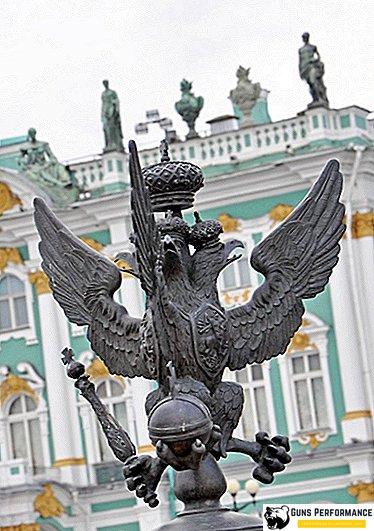
The image of the rider is traditional for the Russian state. This symbol (the so-called rider) was in use even in Kievan Rus, he was present on princely seals and coins.
Initially, the horseman was considered the image of the sovereign, but during the reign of Ivan the Terrible, the king on the emblem was replaced by St. George.
The author of the modern coat of arms of the Russian Federation is an artist from St. Petersburg Yevgeny Ilich Ukhnalev.
The history of the coat of arms of Russia
The central element of the Russian coat of arms is the double-headed eagle, the first time this symbol appeared during the reign of Ivan III, at the end of the 15th century (1497). The double-headed eagle was depicted on one of the royal seals.
Prior to this, the seals most often depicted a lion who was tormenting a snake. Leo was considered a symbol of the Vladimir principality and passed from Prince Vasily II to his son Ivan III. Around the same time, the rider becomes a common symbol of the state (later it will turn into George the Victorious). For the first time, a double-headed eagle as a symbol of the princely power was used on the seal, which sealed the certificate of ownership of land. Also in the reign of Ivan III, an eagle appears on the walls of the Kremlin’s Faceted Chamber.
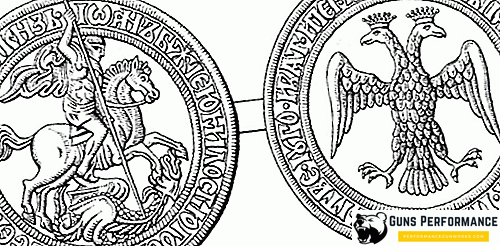
Why it was during this period that the Moscow kings began to use the double-headed eagle, is still causing controversy among historians. The canonical version is that Ivan III took this symbol for himself because he married the niece of the last Byzantine emperor Sophia Paleolog. In fact, for the first time this theory was advanced by Karamzin. However, it raises serious doubts.
Sofia was born in Morea - on the outskirts of the Byzantine Empire and was never close to Constantinople, the eagle first appeared in the Moscow principality several decades after the marriage of Ivan and Sofia, and the prince himself never declared any claims to the throne of Byzantium.
The theory of Moscow as the "third Rome" was born much later, after the death of Ivan III. There is another version of the origin of the double-headed eagle: having chosen such a symbol, the Moscow princes wanted to challenge the rights to it from the strongest empire of the time - the Habsburg one.
There is an opinion that the Moscow princes borrowed an eagle from the South Slavic peoples, who rather actively used this image. However, no trace of such borrowing was found. And the look of the Russian "bird" is very different from its South Slavic counterparts.
In general, why the two-headed eagle appeared on the Russian coat of arms, historians do not exactly know to this day. It should be noted that at about the same time the single-headed eagle was depicted on the coins of the Novgorod principality.
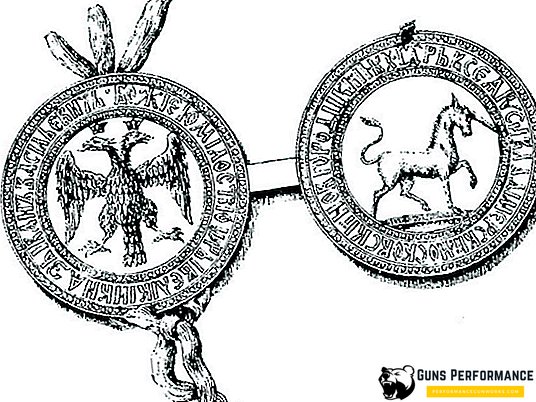
The two-headed eagle becomes the official state emblem of Ivan the Terrible’s grandson, Ivan the Terrible. At first, the eagle is complemented by a unicorn, but it is soon replaced by a rider who hits a dragon - a symbol that is usually associated with Moscow. Initially, the rider was perceived as a sovereign ("the great prince on horseback"), but already during the reign of Ivan the Terrible, they began to call him George the Victorious. Finally, this interpretation will be fixed much later, in the reign of Peter the Great.
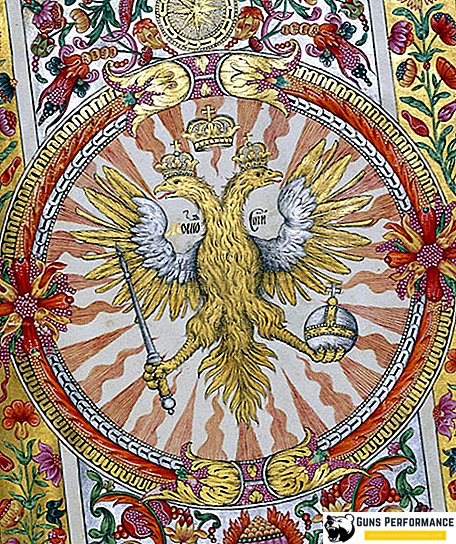
Already during the reign of Boris Godunov, the coat of arms of Russia for the first time received three crowns, located above the heads of the eagle. They meant the conquered Siberian, Kazan and Astrakhan kingdom.
From about the middle of the XVI century, the Russian double-headed eagle is often painted in the “armed” position: the bird’s beak is open, the tongue is stuck out. Such a double-headed eagle seems aggressive, ready to attack. Such a change is the result of the influence of European heraldic traditions.
At the end of the XVI - the beginning of the XVII century, the so-called Golgotha cross often appears between the heads of an eagle. Such innovations coincide with the moment Russia gained church independence. Another version of the coat of arms of that period is the image of an eagle with two crowns and an eight-pointed Christian cross between its heads.
By the way, all three False Dmitrys during the Troubles actively used seals with the image of the Russian coat of arms.
The end of the Troubles and the accession of the Romanov dynasty led to some changes in the state emblem. According to the then heraldic tradition, the eagle began to be portrayed with wings spread.
In the middle of the XVII century, during the reign of Alexei Mikhailovich, the State Emblem of Russia for the first time receives the orb and scepter, the eagle keeps them in its paws. These are traditional symbols of autocratic power. At the same time, the first official descriptions of the coat of arms appeared, they have survived to our time.
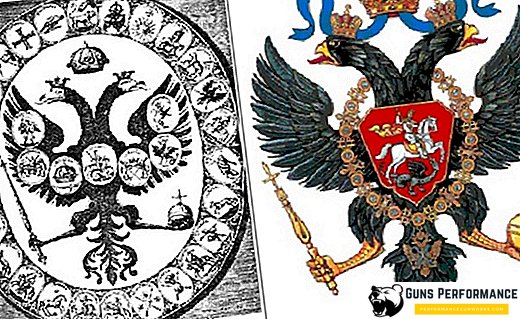
During the reign of Peter I, the crowns above the heads of the eagle acquire the well-known "imperial" appearance, and, moreover, the coat of arms of Russia changes its color scheme. The body of the eagle has become black, and its eyes, beak, tongue and paws are golden. The dragon also began to be depicted in black, and George the Victorious - in silver. This design has become traditional for the entire period of the Romanov dynasty.
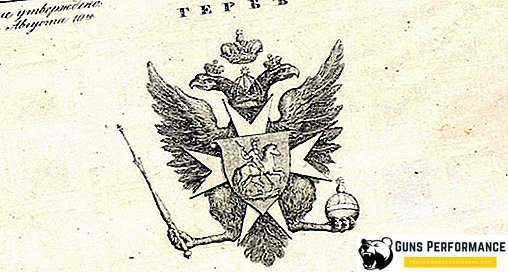
The emblem of Russia underwent comparatively serious changes during the reign of Emperor Paul I. This was the beginning of the Napoleonic wars epoch, in 1799, Britain seized Malta, of which the Russian emperor was the patron. Such an act of the British infuriated the Russian emperor and pushed for an alliance with Napoleon (which later cost him his life). For this reason, the coat of arms of Russia received another element - the Maltese cross. Its significance lay in the fact that the Russian state claims to this territory.
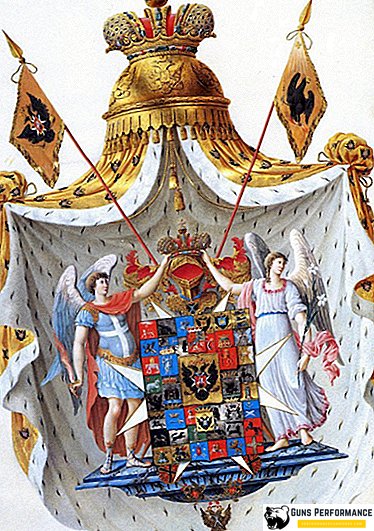
During the reign of Paul I, a draft of the Great Emblem of Russia was prepared. It was made entirely in accordance with the heraldic traditions of its time. The coat of arms of all 43 lands that were part of Russia were collected around the state emblem with a double-headed eagle. The shield with the arms was kept by two archangels: Michael and Gabriel.
However, soon Paul I was killed by conspirators and the great emblem of Russia remained in the projects.
Nicholas I adopted two main variants of the state emblem: full and simplified. Before that, the coat of arms of Russia could be depicted in different versions.
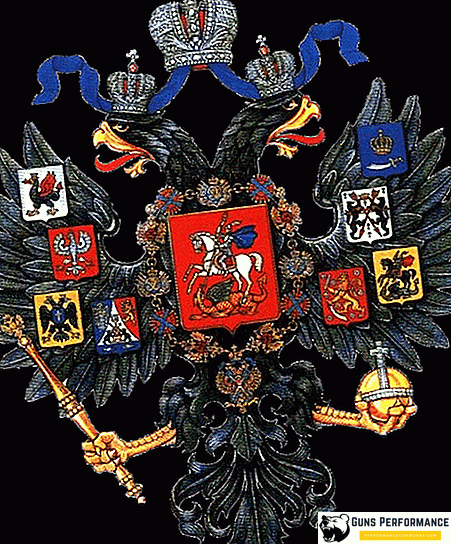
With his son, Emperor Alexander II, heraldic reform was carried out. She was engaged by the herald master Baron Koenet. In 1856, a new small Russian coat of arms was approved. In 1857, the reform was finalized: in addition to the small, the middle and large emblems of the Russian Empire were adopted. They remained virtually unchanged until the events of the February Revolution.
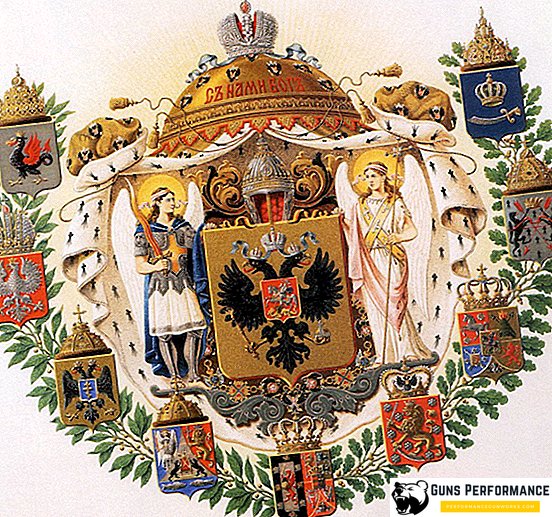
After the February Revolution, the question arose of a new emblem of the Russian state. To solve it, a group of the best Russian heraldry experts was assembled. However, the issue of the emblem was rather political, so they recommended to use the two-headed eagle before the convocation of the Constituent Assembly (where they should have adopted the new emblem), but without the imperial crowns and George the Victorious.
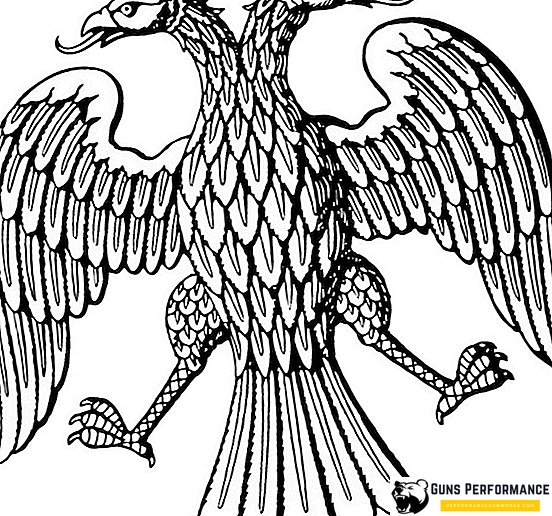
However, six months later another revolution occurred, and the Bolsheviks were already engaged in the development of a new emblem for Russia.
In 1918, the Constitution of the RSFSR was adopted, and with it the draft of the new coat of arms of the republic was approved. In 1920, the Central Executive Committee adopted a version of the coat of arms, drawn by the artist Andreev. The coat of arms of the Russian Soviet Socialist Republic was finally adopted at the All-Russian Congress in 1925. The coat of arms of the RSFSR was used until 1992.
The current state emblem of Russia is sometimes criticized for the abundance of monarchical symbols, which are not very appropriate for a presidential republic. In 2000, a law was passed that establishes an exact description of the emblem and regulates the procedure for its use.



